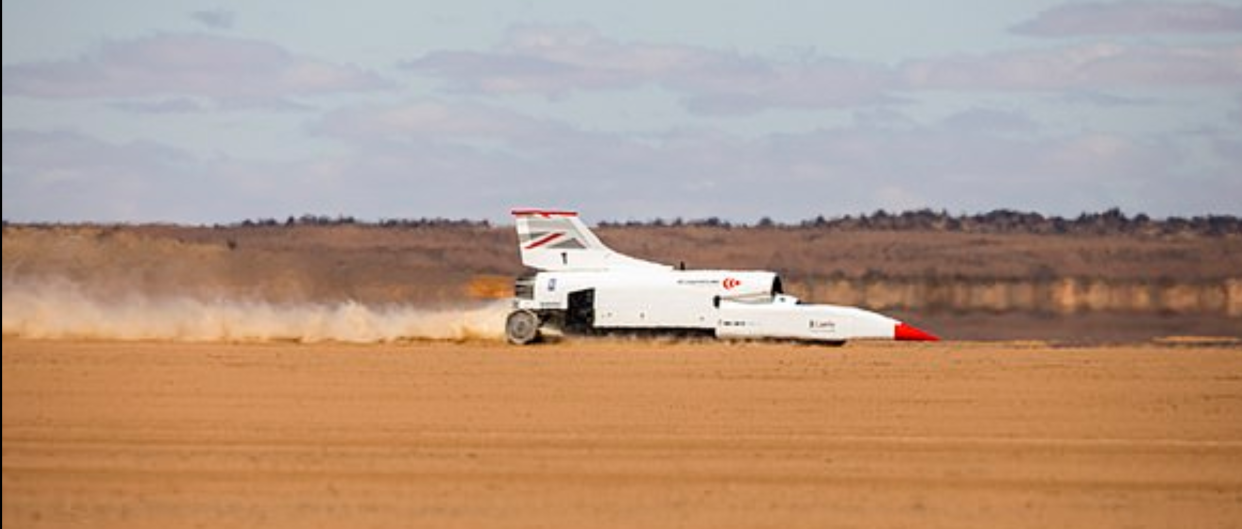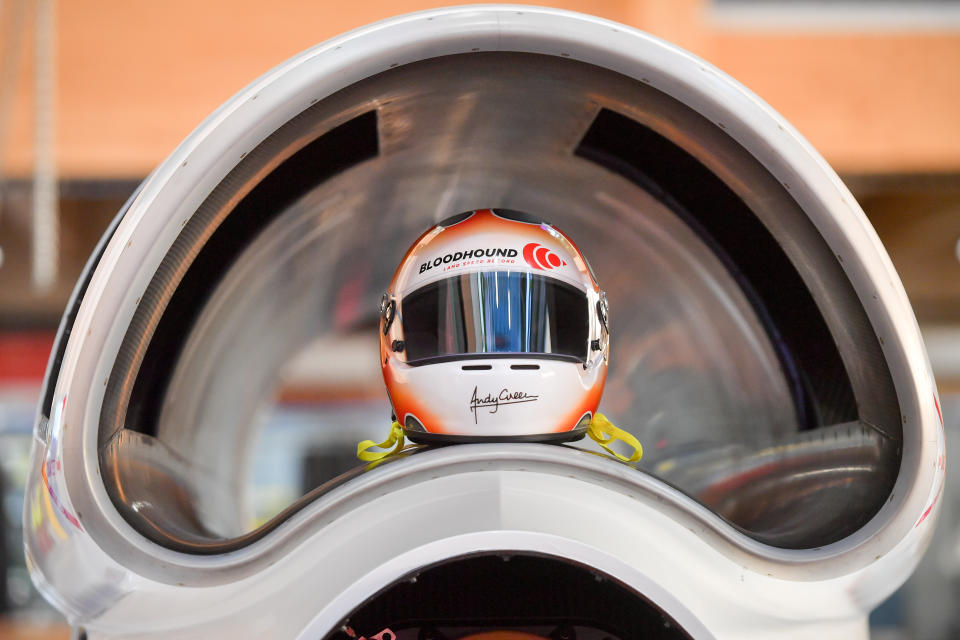British supersonic car which could smash land speed record 'hits 334mph in tests'

A British supersonic car which could smash the land speed record next year has hit 334mph in tests.
The Bloodhound vehicle will aim to smash the land speed record of 763mph, and has begun trials in South Africa at the Hakskeenpan desert in Northern Cape.
The current speed record was set by British RAF wing commander Andy Green 22 years ago in Thrust. Green will also pilot the Bloodhound.
The test runs will see the car blast across a dried-up lake bed at up to 600mph, with the team watching closely to see how the car slows down.

As the team tests the stopping ability of the car, they will increase speed in increments of 50mph.
The team will test how much drag the car creates using the wheel brakes, drag parachutes and giant air brakes, while monitoring progress using 192 pressure sensors on the vehicle.
READ MORE
Bloodhound reveals ‘desert spec’ car
Mysterious ‘gravity waves’ seen rippling in our atmosphere
Apple announces Airpods Pro with noise cancellation
If these tests are successful, a new rocket motor will blast the Bloodhound up to more than 800mph.
The tests will determine what size of rocket can be fitted to the car for the World Land Speed Record attempt in 12-18 months time.

Chief engineer Mark Chapman said: ‘We'll pretty rapidly build up the speeds to 400 and 500mph.
‘Below about 400mph, the front wheels steer the car just like they do on your car. But above 400-450mph, the wheels start to work like rudders and it's the aerodynamic forces on the wheels that's doing the steering.
‘Here at the Hakskeenpan on a 10-mile track we can accelerate for much longer, achieve higher speeds and investigate the car’s stability, performance and drag, all crucial as we move towards setting a new world land speed record.’

